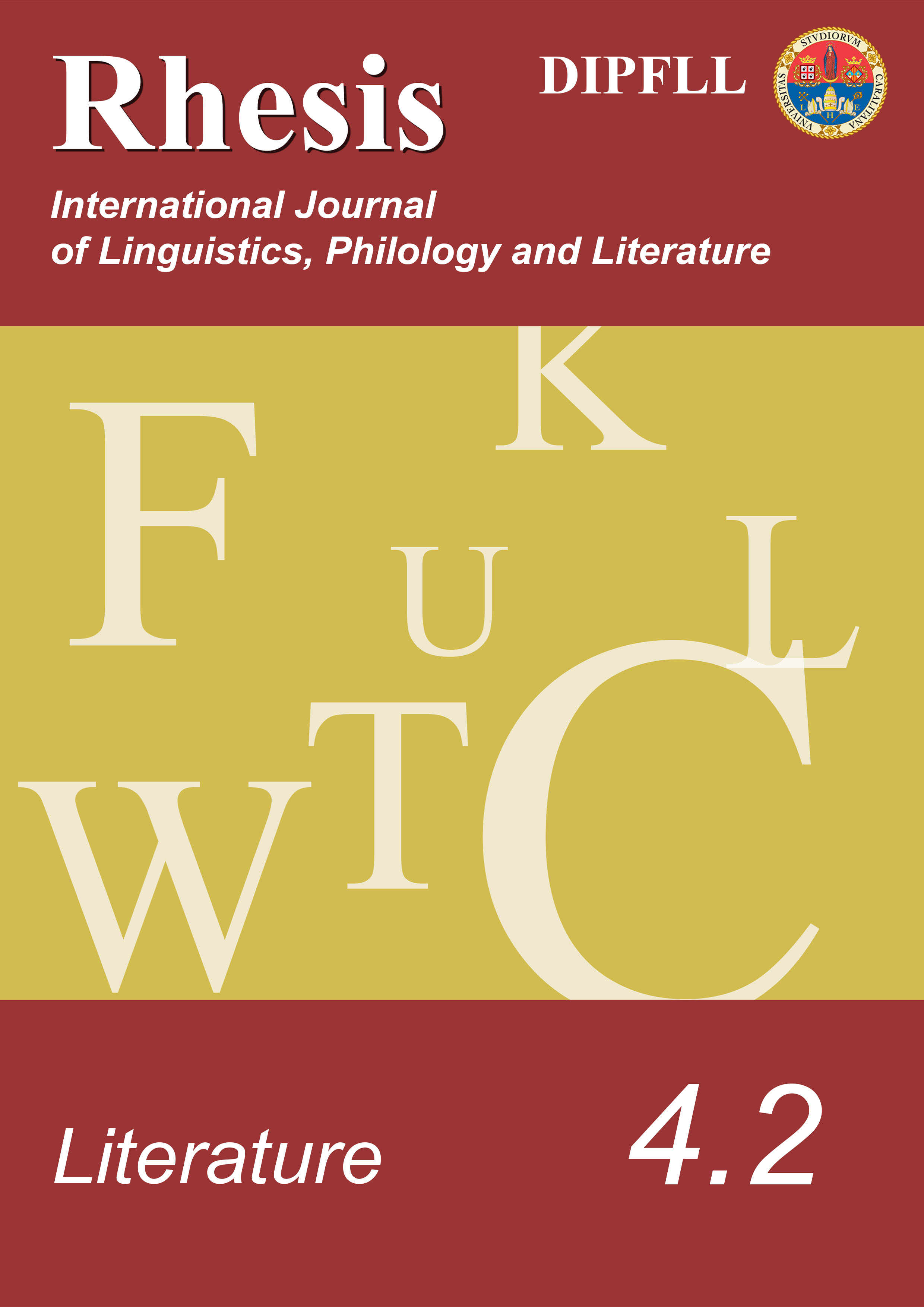Letture (e scritture) allegoriche nella Grecia pre-alessandrina
Abstract
Long before the appearance of the term ‘allegory’ (attested for the first time within Stoicism), there came into use in ancient Greece, from the sixth century. a. C., an allegorical interpretation of the mythic narratives preserved in the Homeric and Hesiodic poems; this practice took hold in the classical age, especially at the hands of the Sophists. In more remote dates, perhaps as early as the Iliad, we can see the interest of poets and philosophers towards such a device, so well-suited for didactic or satirical purposes.
Downloads
References
BONANNO, Maria Grazia, “Sull’allegoria della nave (Alcae. 208 V. ; Hor. Carm. I 14)”, «Rivista di Cultura Classica e Medievale», 18 (1976), pp.179-197.
BORDIGONI, Carlitria, “Empedocle e la dizione omerica”, in Livio ROSSETTI, Carlo SANTANIELLO (eds.), Studi sul pensiero e sulla lingua di Empedocle, Bari, Levante, 2004, pp. 199- 289.
CAPIZZI, Antonio, La porta di Parmenide, Roma, Edizioni dell’Ateneo, 1975.
CAPRETTINI, Gian Paolo, “Allegoria”, in Enciclopedia Einaudi I, Torino, Einaudi, 1977, pp. 362-392.
CASSIO, Albio Cesare, “Early Editions of the Greek Epics and Homeric Textual Criticism in the Sixth and Fifth Centuries BC”, in Franco MONTANARI, Paola ASCHERI (eds.), Omero tremila anni dopo, Roma, Edizioni di storia e letteratura, 2002, pp. 105-136.
FERRARI, Franco, Il migliore dei mondi impossibili. Parmenide e il cosmo dei Presocratici, Roma, Aracne, 2010.
GALLAVOTTI, Carlo, Empedocle. Poema fisico e lustrale, Milano, Mondadori, 1975.
HEINEMANN, Isaak, “Die wissenshaftliche Allegoristik der Griechen”, «Mnemosyne», 4.2 (1949), pp. 5-18.
LAKS, André, “Between Religion and Philosophy: the Function of Allegory in the Derveni Papyrus”, «Phronesis», 47 (1997), pp. 121-142.
LAKS, André, “Aristote, l’allégorie, et les débuts de la philosophie” in Brigitte PEREZ-JEAN, Patricia EICHEL-LOJKINE (eds.), L’Allégorie de l’Antiquité à la Renaissance, Paris, Champion, 2004, pp. 211-220.
LENTINI, Giuseppe, “La nave e gli ἐταῖροι: in margine ad Alceo frr 6, 73, 208a V.”, «Materiali e Discussioni», 46 (2001), pp. 159-170.
NEWIGER, Hans-Joachim, Metapher und Allegorie. Studien zu Aristophanes, München, Beck, 1957 («Zetemata» Heft 16).
PEPIN, Jean, Mythe et allégorie. Les origines grecques et les contestations judeo-chrétiennes, Paris, Aubier 1958.
RAMELLI, Ilaria, RADICE, Roberto (eds.), Allegoristi dell’età classica, Milano, Bompiani, 2007.
REALE, Giovanni (a cura di), Platone. Fedro, Milano, Mondadori, 20052.
SCHIBLI, Hermann S., Pherekydes of Syros, Oxford, Clarendon Press, 1990.
SCHRÖDER, Stephan, “Zur Λιταί-Allegorie Ilias Ι 502-512”, «Rheinisches Museum», 147 (2004), pp. 1-8.
SLAVEVA-GRIFFIN, Svetla, “Of Gods, Philosophers, and Charioteers: Content and Form in Parmenides’ Proem and Plato’s Phaedrus”, «Transactions of the American Philological Association», 133 (2003), pp. 227-253.
SMALL, Stuart J., “On Allegory in Homer”, «Classical Journal», 44 (1949), pp. 423-430.
TASSO, Torquato, Discorsi dell’arte e del poema eroico, ed. Luigi POMA, Bari, Laterza, 1964.
TATE, Jonathan, “The Beginnings of Greek Allegory”, «Classical Review», 41 (1927), 214-215.
WEST, Martin L., Hesiod. Theogony, Oxford, Clarendon Press, 1966.
WEST, Martin L, Hesiod. Works & Days, Oxford, Clarendon Press, 1978.



